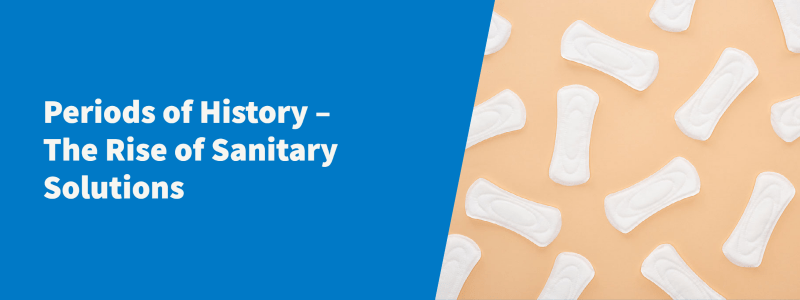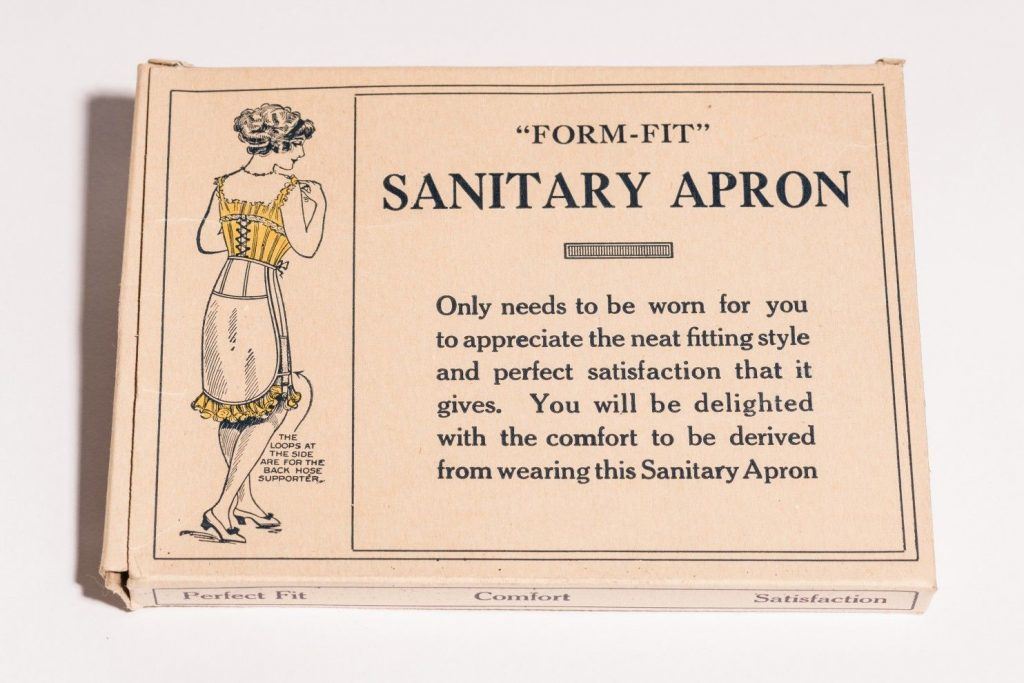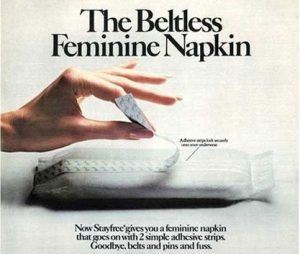For as long as there has been humankind, there have been periods. Sanitary products are a part of everyday society, and have been for a long time, but have you ever wondered how past sanitary items differ from the ones we know today?
Some may not consider sanitary towels and tampons as “life changing advancements” per se, but things weren’t always so simple. Taking a look at some of the past solutions to menstrual flow really shows us just how far things have come.
The Sanitary Apron
In the 1850s, that time of the month must have been extra uncomfortable. Some methods involved aprons with rubber barriers to insert into underwear, which wouldn’t have been the comfiest to sit in! Another option was to pin cotton and flannel onto bloomers, making the whole thing a very DIY ordeal.
Lister’s Towels
1896 marked the release of this Johnson & Johnson product – the early ancestor of the sanitary pad. It was the world’s first mass-produced, disposable, gauze-covered cotton pad; finally women had a more napkin-like solution, deviating from other options which ranged from rags to rabbit skins.
The idea was born from a maternity kit pack, becoming a sanitary solution when women encouraged Johnson & Johnson to sell the pads separately.
Kotex Cellulose Pads
Another solution born from a previous function: this cotton-acrylic blend was used for WWI bandages, and went on to be showcased as a revolutionary way to deal with periods. First sold in 1920, the same year women got the right to vote, the 1900s started to say goodbye to poor protection and dangerously unsanitary methods.
The Tampon
Finally, an effective option that wasn’t simply underwear padding! 1931 saw the creation of this now worldwide product, made out of cardboard and cotton and even featuring an applicator so insertion could be done properly and easily by any user.
Call Today for a Sanitary Waste Collection Quote for Your Business
Adhesive Pads
In 1969, a company called Stayfree were the first to put out a sanitary pad with an adhesive strip, so that it could stick to underwear without any fuss. Before this, menstrual belts or pins were used to keep pads in place, which either meant a whole lot of unappealing discomfort or a whole lot of hassle.
Menstrual Cups
Though a similar design existed in the 1930s, the menstrual cup didn’t really become a hit until the 21st century. Inserted like a tampon, it sits slightly lower and creates a vacuum seal that achieves minimal chance of leakage and optimum comfort.
Not only are menstrual cups a step above for convenience and function – they save money and the environment.
It’s estimated that periods have an average lifetime cost of around £4,800 and create between 12,000 and 14,400 pieces of non-biodegradable waste per woman. A reusable silicone cup, which requires one purchase and can be cleaned after each use, eradicates these shocking figures.
So, have we reached a peak in menstrual revolutions? Or do you think in 100 years’ time, society will look back at our sanitary solutions and scoff?
Today, convenience is at the heart of sanitary care. Gone are the days of menstrual diapers and bulky cages, however we’ve yet to eradicate the issue of sanitary waste. As tampons and sanitary towels are currently the most widely used forms of menstrual management, Direct365 target our waste solutions to offer safe and eco-friendly disposal.
We provide a range of sanitary bins and sanitary waste collection services to all kinds of businesses nationwide, and also offer packs and dispensers of FabLittleBag disposal bags.
If you’d like to read more on feminine hygiene, check out our article on Period Poverty here.



